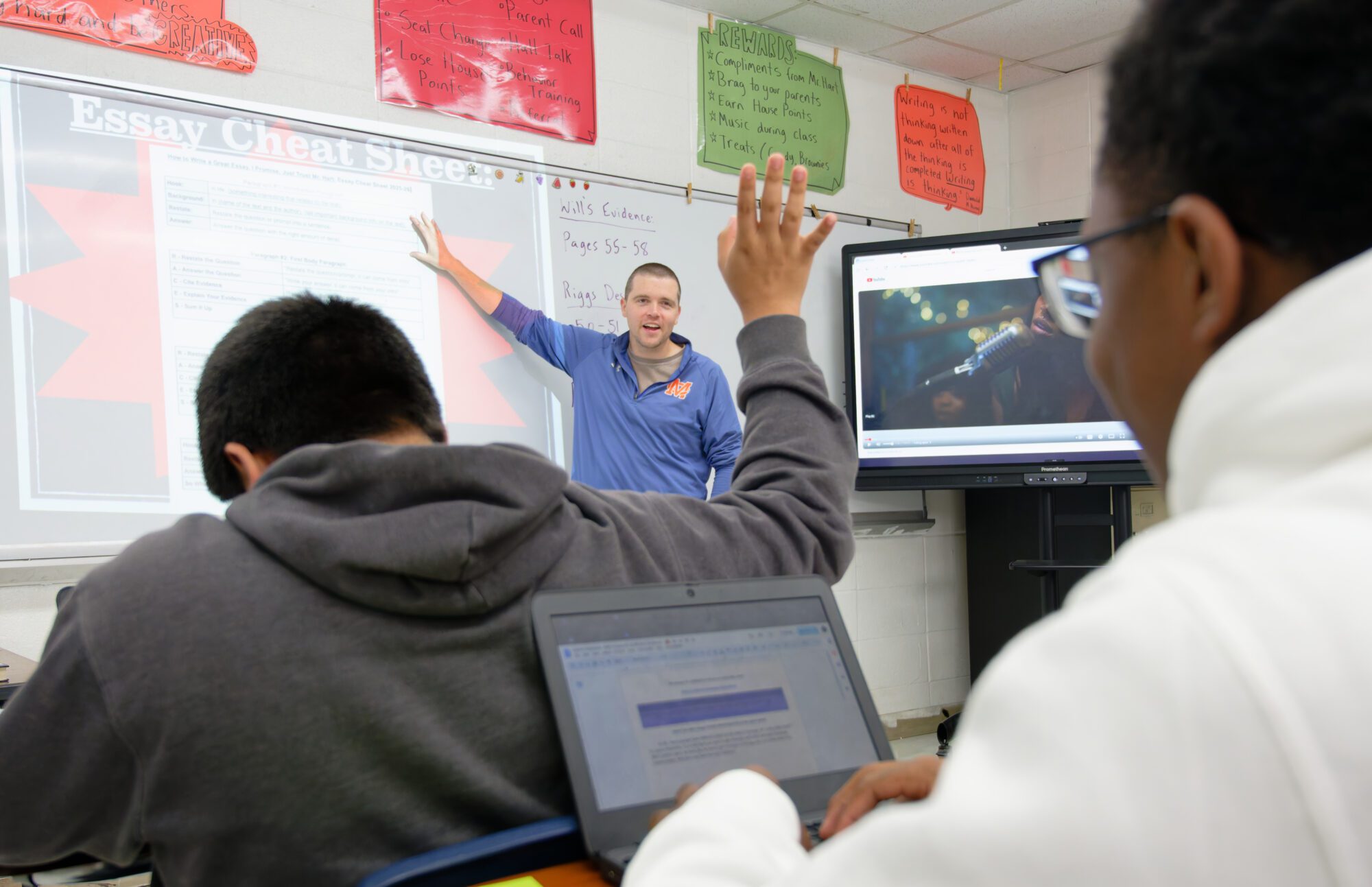Report on the Joaquin Bustoz Math-Science Honors Program’s Contribution to Sustainable Development Goals
Program Overview and Mission
The Joaquin Bustoz Math-Science Honors Program (JBMSHP) at Arizona State University, established in 1985, recently celebrated its 40th anniversary. The program is a six-week residential summer initiative designed to prepare motivated high school students for university-level studies and careers in Science, Technology, Engineering, and Math (STEM). Its core mission aligns with several United Nations Sustainable Development Goals (SDGs) by providing high-quality education and reducing systemic inequalities for underrepresented students.
- Program Structure: A six-week, no-cost residential program.
- Academic Core: Students enroll in a college-level mathematics course for university credit.
- Support System: Participants receive comprehensive support through tutoring, mentoring, and success sessions addressing academic and social challenges.
- Community Focus: The program fosters a strong sense of community and belonging, with a significant number of alumni returning as staff to mentor new cohorts.
Alignment with SDG 4: Quality Education
The JBMSHP directly advances SDG 4 by ensuring inclusive and equitable quality education and promoting lifelong learning opportunities for all. It provides a rigorous academic environment that equips students with the skills and confidence necessary to succeed in higher education. The program’s success in achieving this goal is demonstrated by its high post-participation matriculation and graduation rates.
- Program Reach: Over 3,200 students have completed the program since its inception.
- College Attendance: Since 2005, 99% of program participants have attended college.
- STEM Degree Attainment: 73% of participants have successfully earned a degree in a STEM field.
Addressing SDG 10: Reduced Inequalities
A foundational principle of the JBMSHP is to combat systemic inequality, directly contributing to SDG 10. The program was founded by Joaquin Bustoz Jr., who was motivated by his own experiences with poverty and racial discrimination to create opportunities for students whose potential might be limited by their circumstances. The program actively recruits and supports students from demographics that are historically underrepresented in STEM fields.
- Target Demographics:
- First-generation college students
- Students from low-income neighborhoods
- Students from rural and underserved communities
- Case Study – Overcoming Barriers: Alumni testimonies, such as that of Savion Smith, highlight how the program provides a supportive community that mitigates the effects of discrimination and self-doubt, allowing students to focus on their academic potential. The founder’s personal protest against segregation underscores the program’s deep roots in social justice.
Broader Impacts on Sustainable Development
SDG 3: Good Health and Well-being & SDG 5: Gender Equality
The program’s impact extends to other critical SDGs. By empowering students to pursue advanced degrees, it contributes to a more diverse and capable workforce in vital sectors. This includes:
- SDG 3: Alumni such as Chermiqua Tsosie and Savion Smith are pursuing careers in medicine, with goals of serving their communities, including the Navajo Nation and in child psychiatry. This demonstrates a direct link between the program’s educational mission and the goal of ensuring healthy lives and promoting well-being.
- SDG 5: The program fosters gender equality by providing young women with the tools and support to excel in traditionally male-dominated STEM fields. The success of alumni like Trachette Jackson, now a professor of mathematics and associate vice president at the University of Michigan, exemplifies this contribution.
SDG 8: Decent Work and Economic Growth
By preparing students for high-demand STEM careers, the JBMSHP supports SDG 8. The program acts as a catalyst for economic mobility, enabling graduates to secure decent work and contribute to sustainable economic growth. The intensive academic training and development of skills like time management and resilience prepare students for the rigors of the modern workforce.
Conclusion: A Legacy of Empowerment
For four decades, the Joaquin Bustoz Math-Science Honors Program has served as a powerful model for achieving multiple Sustainable Development Goals. By providing high-quality, equitable education (SDG 4), it actively reduces inequalities (SDG 10) and empowers a diverse generation of leaders in fields critical to public health (SDG 3), gender equality (SDG 5), and economic growth (SDG 8). The program’s enduring success is a testament to its holistic approach, which combines rigorous academics with a nurturing community to ensure that a student’s background does not determine their future success.
Analysis of Sustainable Development Goals in the Article
1. Which SDGs are addressed or connected to the issues highlighted in the article?
-
SDG 4: Quality Education
The entire article is centered on the Joaquin Bustoz Math-Science Honors Program (JBMSHP), an educational initiative that provides high-school students with access to a free, six-week, college-level mathematics course. It aims to provide inclusive and equitable quality education, preparing students for university and careers in STEM fields.
-
SDG 10: Reduced Inequalities
The program was founded to combat systemic inequality and racism, as experienced by its founder, Joaquin Bustoz Jr. It specifically targets students who are often marginalized, including those who are first in their family to attend college, come from low-income neighborhoods or rural towns, and are from racial or ethnic minority groups (e.g., Indigenous and Black students are highlighted). The program aims to provide equal opportunities for success regardless of a student’s background.
-
SDG 1: No Poverty
The article mentions that the program’s founder came from a “really poor” family and that the program is designed for students from “low-income neighborhoods.” By providing a free, high-quality educational pathway to lucrative STEM careers (like medicine and academia), the program serves as a tool for social and economic mobility, helping to break the cycle of poverty for participants and their families.
-
SDG 5: Gender Equality
The article prominently features the stories and successes of several female participants and leaders, such as Chermiqua Tsosie, Trachette Jackson, and the program manager, Cynthia Barragan Romero. This highlights the program’s role in empowering women and girls to pursue and succeed in STEM, a field where they have been historically underrepresented, thus contributing to gender equality.
2. What specific targets under those SDGs can be identified based on the article’s content?
-
Target 4.3: Ensure equal access for all women and men to affordable and quality technical, vocational and tertiary education, including university.
The JBMSHP directly addresses this target by providing a high-quality, university-level math course to high school students “at no cost to them.” It acts as a bridge program, preparing and encouraging students from diverse backgrounds to pursue tertiary education, with a 99% college attendance rate among its participants since 2005.
-
Target 4.4: Substantially increase the number of youth and adults who have relevant skills, including technical and vocational skills, for employment, decent jobs and entrepreneurship.
The program focuses on advanced mathematics and science skills, which are critical for high-demand STEM careers. The article notes that 73% of participants earn a STEM degree, demonstrating that the program effectively equips youth with the relevant skills needed for future employment in these fields.
-
Target 4.5: Eliminate gender disparities in education and ensure equal access to all levels of education and vocational training for the vulnerable, including… indigenous peoples and children in vulnerable situations.
The program is explicitly designed for students from vulnerable situations, including those from “low-income neighborhoods or rural towns” and first-generation college students. The article highlights participants like Chermiqua Tsosie from the Navajo Nation, demonstrating its commitment to providing access to Indigenous youth.
-
Target 10.2: Empower and promote the social, economic and political inclusion of all, irrespective of… race, ethnicity, origin… or economic or other status.
The program’s core mission is to empower students from backgrounds that have faced systemic inequality. By providing academic support, mentorship, and a sense of belonging, it promotes the social and economic inclusion of students from various racial, ethnic, and low-income backgrounds, as seen in the stories of Trachette Jackson, Savion Smith, and Chermiqua Tsosie.
3. Are there any indicators mentioned or implied in the article that can be used to measure progress towards the identified targets?
-
Percentage of participants attending college:
The article states, “Since 2005, an impressive 99% of program participants have attended college.” This is a direct quantitative indicator for measuring success in providing access to tertiary education (Target 4.3).
-
Percentage of participants earning a STEM degree:
The statistic that “73% earning a STEM degree” is a clear indicator of the program’s effectiveness in equipping students with relevant technical skills for employment (Target 4.4).
-
Number of students completing the program:
The article mentions, “Over 3,200 students have completed the program.” This serves as an indicator of the program’s reach and scale over its 40-year history.
-
Demographics of program participants:
The article implies that the program tracks the background of its students by describing them as “first in their family to attend college, often from low-income neighborhoods or rural towns.” The specific examples of Indigenous (Navajo Nation) and Black students serve as a qualitative indicator of the program’s success in reaching vulnerable and underrepresented groups (Target 4.5 and 10.2).
-
Alumni career progression:
The successful careers of alumni are mentioned, including a professor of mathematics at the University of Michigan, the chief fellow in child psychiatry at Yale School of Medicine, and a clinical research assistant on track for medical school. This serves as an implied, long-term indicator of the program’s impact on economic mobility and poverty reduction (SDG 1).
Summary of Findings
| SDGs | Targets | Indicators |
|---|---|---|
| SDG 4: Quality Education |
|
|
| SDG 10: Reduced Inequalities |
|
|
| SDG 1: No Poverty |
|
|
| SDG 5: Gender Equality |
|
|
Source: news.asu.edu







